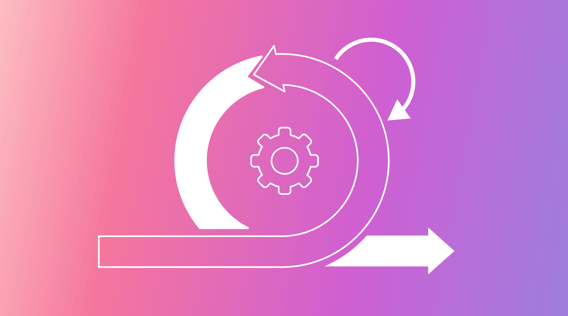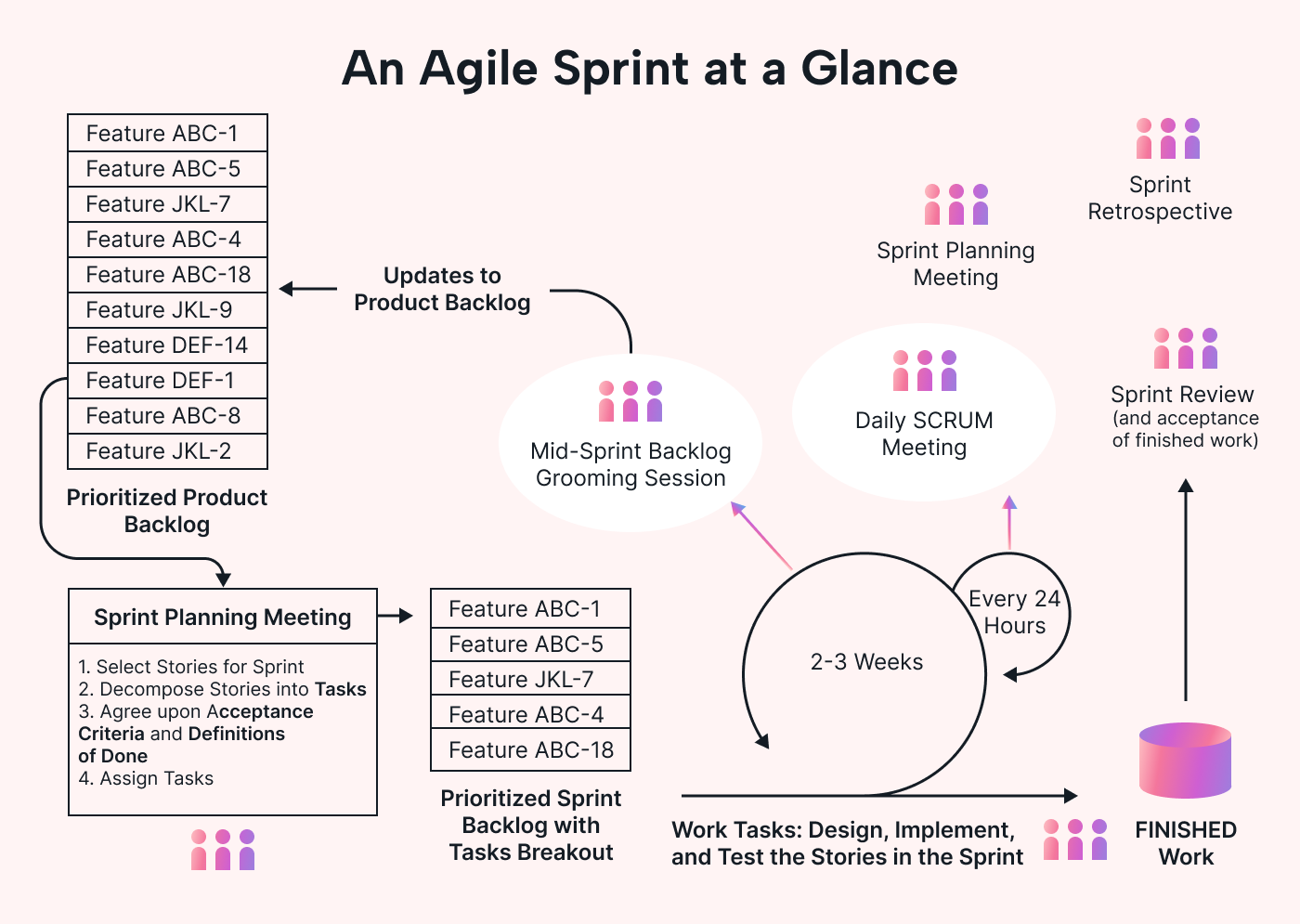Keeping your team on track can be challenging, especially if you’re responsible for multiple complex projects. It seems like there is always more work to be done and fewer opportunities to get organized. This is where Agile shines.
A 2022 study by KPMG showed that 71% of respondents who adopted Agile methodologies felt that it improved overall project delivery. They felt better able to respond and adapt to changing project conditions because of Agile’s incremental approach. But how do you get started?
This article will show you the following:
- What the five Agile Scrum ceremonies are and how they save you time.
- The key features of effective Agile ceremonies.
- What Kanban ceremonies are, and how they differ from Scrum ceremonies.
Let’s get started with a quick primer on Agile definitions.
What is an Agile ceremony, and how many are there?
If you’re unfamiliar with the Agile methodology, it is a flexible and collaborative approach to project management. Your team works in short iterations to deliver projects faster while being able to adapt to changes along the way. Agile ceremonies are regular meetings that help your team collaborate, plan, and review progress. These meetings, or ceremonies, provide a flexible approach to improving ongoing project delivery.
Scrum and Kanban are frameworks of the Agile methodology. Agile is a philosophy. Scrum and Kanban are implementations of that philosophy.
Agile and Scrum are often used interchangeably, especially in ceremonies.
There are five specific Scrum ceremonies:
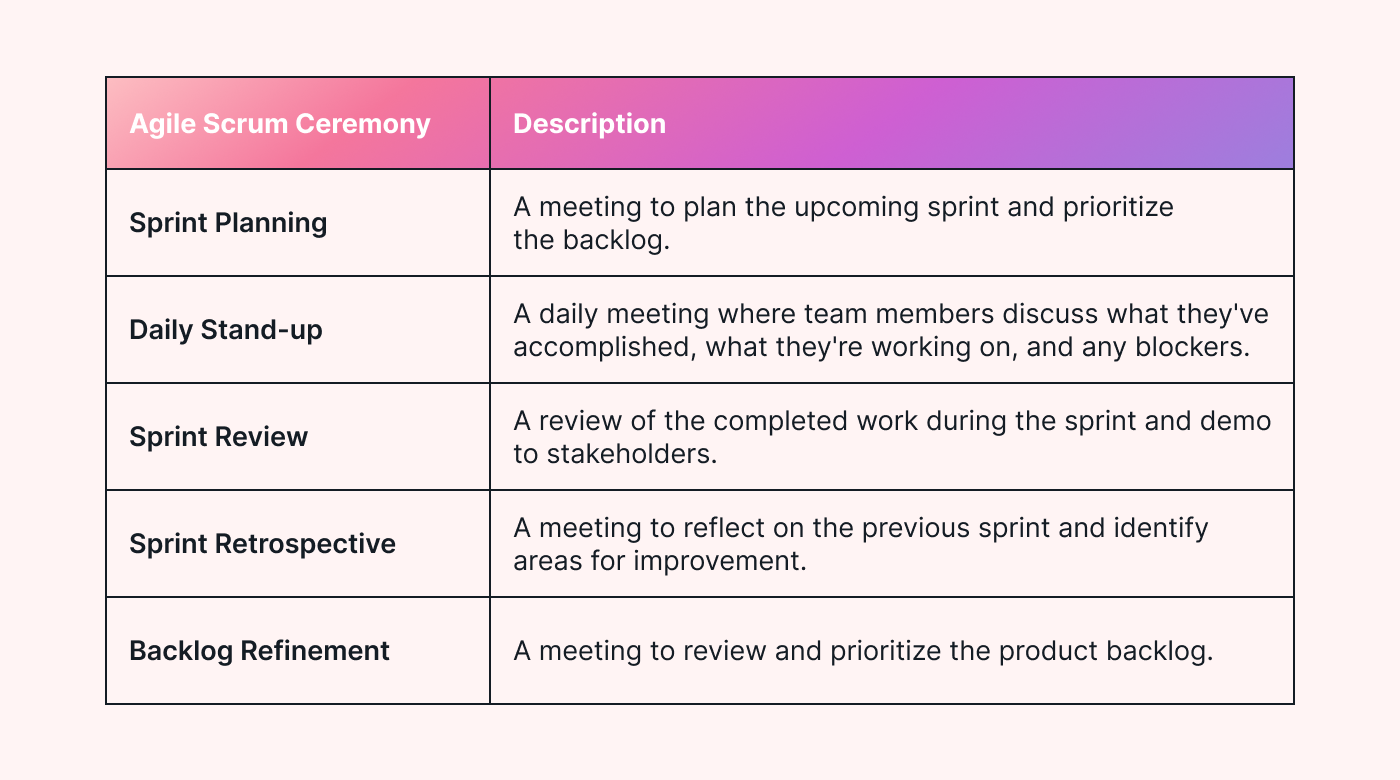 |
There are also seven Kanban cadences:
- Daily Standup
- Replenishment Meeting
- Delivery Planning Meeting
- Service Delivery Review
- Operations Review
- Risk Review
- Strategy Review
We’ll explore these ceremonies and cadences, as well as the differences between them, in this article.
The key features of effective Agile ceremonies
Whether you follow the seven Kanban cadences or the five Scrum ceremonies, these are the key features of successful Agile meetings:
Clear purpose and objectives
- Every ceremony has a clear purpose and specific objective that will be achieved within the time frame of the ceremony. For example,
- Your sprint planning meeting objective might be to set the sprint goal and determine the sprint backlog.
- An agenda is provided in advance, and all team members know what will be achieved in the ceremony.
Time-bound
- Ceremonies are time-boxed, meaning they have a set duration.
- The duration is respected, keeping to the predefined time frame.
- Ceremonies are concise and focused to optimize meeting time.
Active participation
- All relevant team members should actively participate.
- This includes the development team, Scrum master, and product owner.
- Active participation promotes collaboration and should be a key part of your business culture.
Open and transparent communication
- Team members must feel safe to share ideas and opinions.
- By collaborating, the team can take better ownership of tasks, providing valuable insights into how tasks and projects can be improved.
Focus on actionable outcomes
- Agile ceremonies are not just for discussion - they are for structured planning.
- Action items and SMART objectives must be set for the meeting to be effective.
- Backlogs should be updated, tasks defined, deadlines set, and all team members should clearly understand responsibilities.
Adaptable and Flexible
- While ceremonies are well-structured, they should be flexible enough to suit their specific context and project demands.
- Your first ceremonies won’t be perfect - but don’t worry. They were designed to be improved and optimized over time.
What are the top seven benefits of Agile ceremonies?
Whether you’re using the Kanban cadences or Scrum ceremonies, these are the seven benefits of implementing Agile meetings in your business:
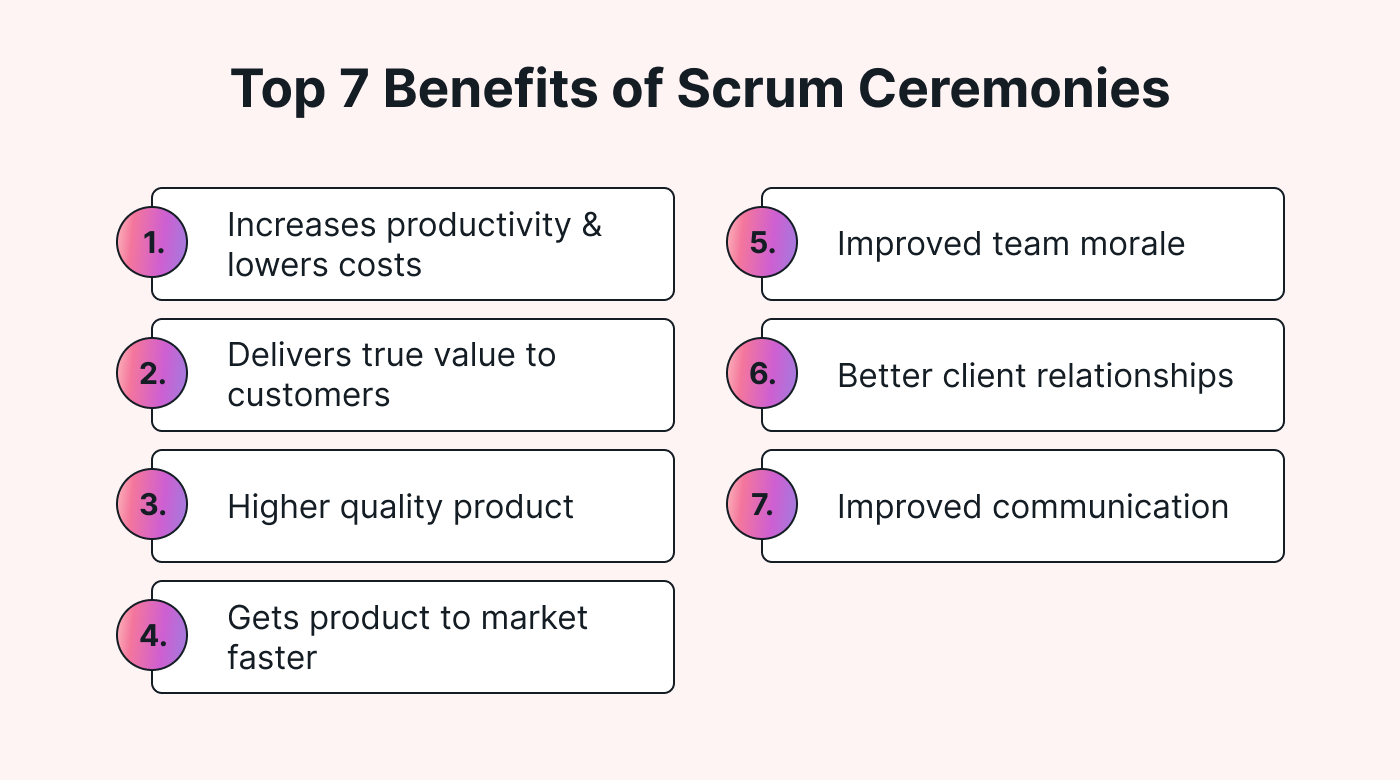 |
What are the two Scrum artifacts?
When defining your sprints and deciding which tasks to push into the sprint to be completed by the team, you’ll constantly iterate two main artifacts:
- The product backlog: Managed by the product owner, this artifact contains a complete list of all the items you’ll be working on to complete an entire project.
- The sprint backlog is a zoomed-in list of the items that will be worked on in the next sprint (a short time frame where specific tasks will be worked on).
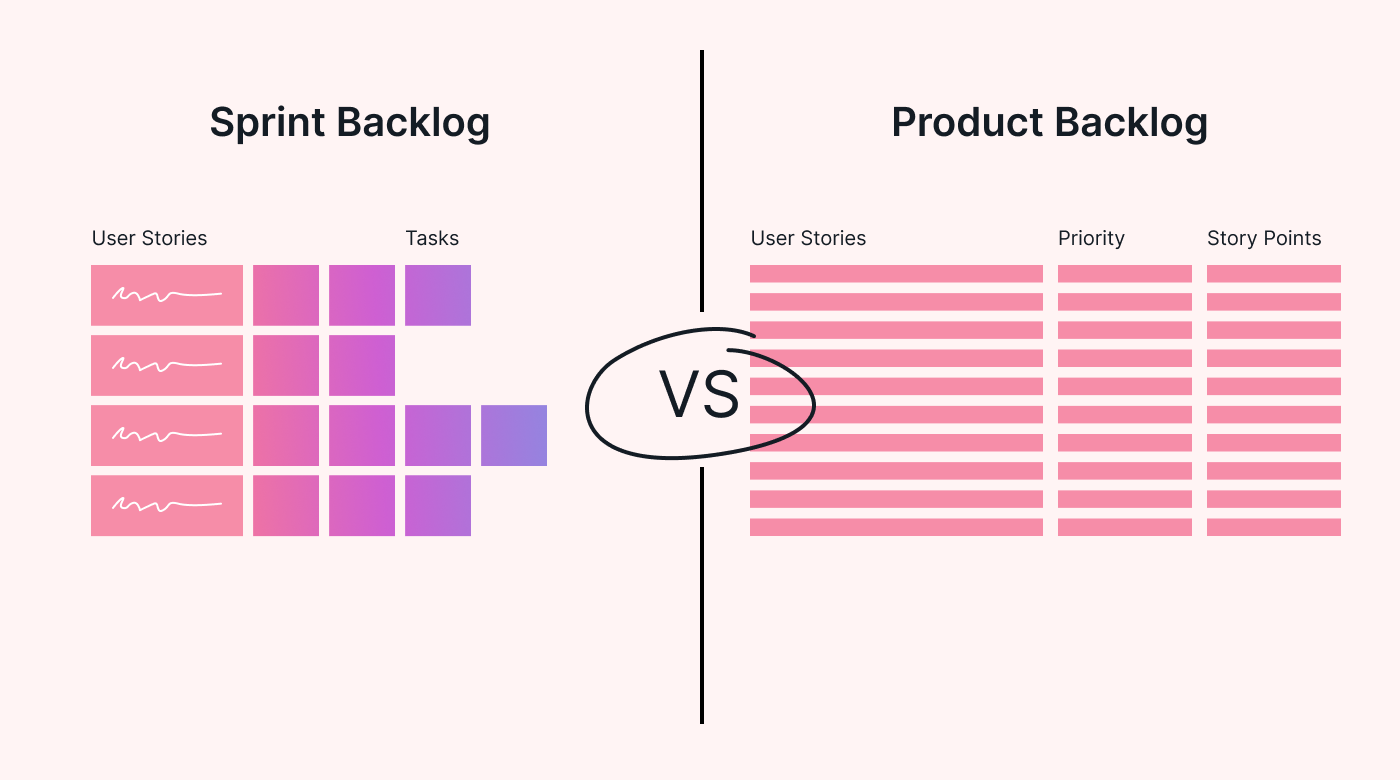 |
User stories serve as the building blocks for the product and sprint backlogs. They capture the needs of your users (or customers) in simple language, helping you and your team understand what to deliver and in what order. User stories prioritize features and drive the planning and implementation of tasks during sprints, keeping your Agile team focused on user or client value.
The five Agile (Scrum) ceremonies explained
Let’s dive into the ceremonies.
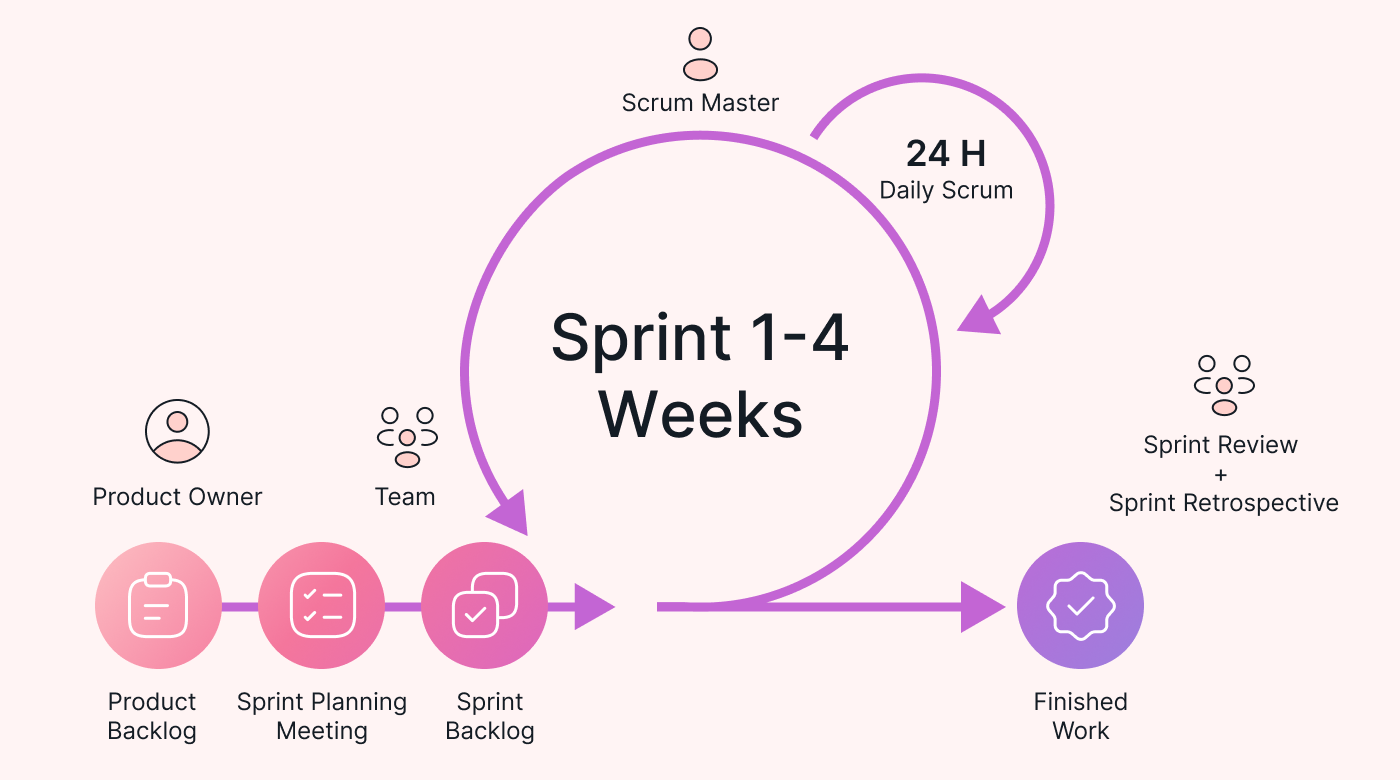 |
Sprint planning meeting
The sprint planning meeting is the first of the Scrum ceremonies. The product owner will have prepared the product backlog before the meeting, so the team can define the sprint backlog and set the sprint goal.
This ceremony establishes a plan to achieve the sprint goal and involves the entire Agile team: the Scrum master, product owner, and development team.
The outcome of this ceremony is to create a clear and documented plan for what will be completed in the upcoming sprint cycle.
Daily standup meeting
When the sprint begins, standups are held every day. Standups are short, time-boxed, daily meetings (usually 15 minutes) for the development team to update each other on what they are working on and what has been completed.
Each team member answers three questions:
- What did I do yesterday?
- What will I do today?
- Are there any roadblocks preventing me from completing my tasks?
Daily standups, or daily Scrums, facilitate transparency and highlight issues while they are easier to overcome. The Scrum master leads standups, but the entire development team participates daily.
Sprint review meeting
A sprint review meeting is conducted at the end of each sprint. The team showcases its completed work to stakeholders and gathers feedback. Feedback is provided, questions are asked, and changes are suggested. This review process helps the team to validate the product backlog and adjust as needed. It also keeps the team focused on tight, organized sprints where they are working on the right things.
Sprint retrospective
The sprint retrospective is held after the sprint review. It is also always held before the next sprint. In the sprint retrospective, your Agile team reflects on the previous sprint to identify what went well, what didn’t, and what can be improved for next time. You’ll discuss what actions can be taken to enhance the team’s effectiveness.
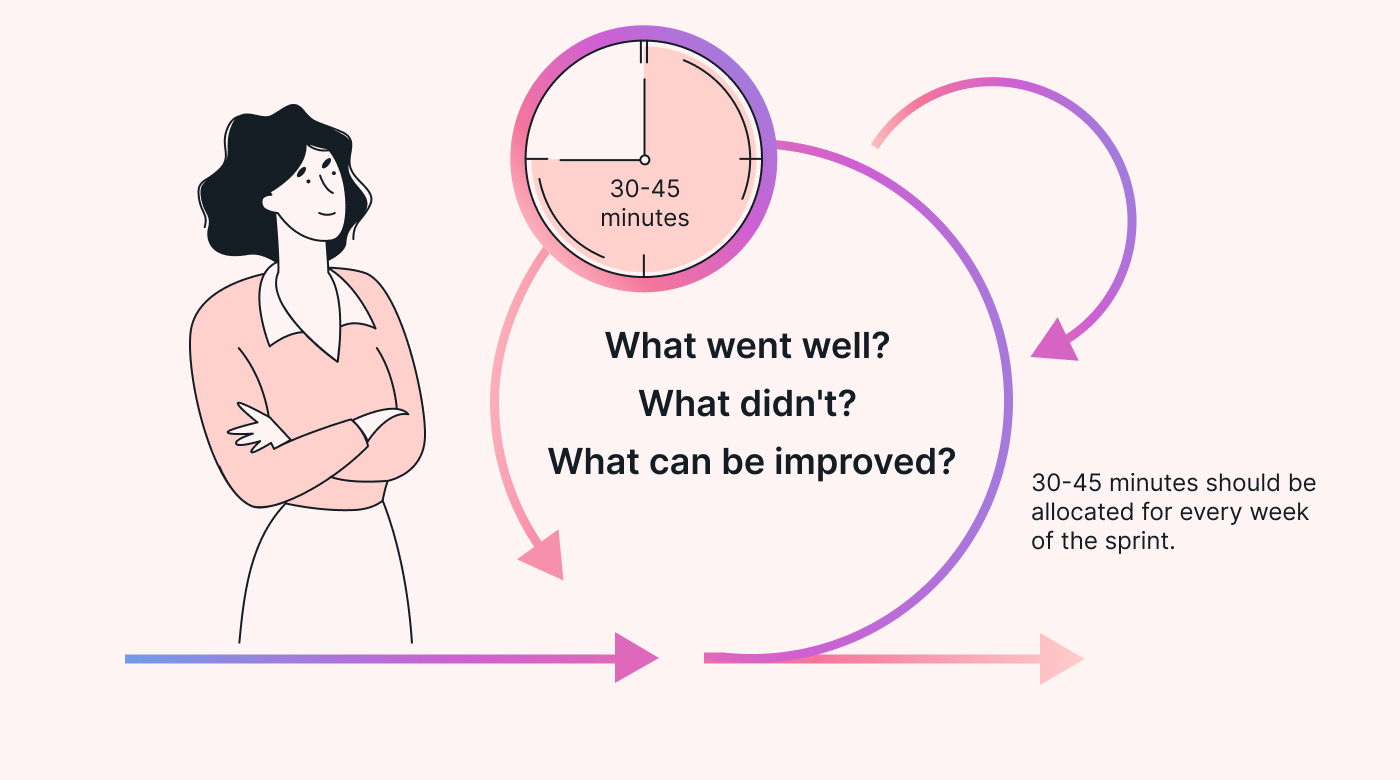 |
These meetings are nameless, shameless, and blameless. Focusing strictly on what can be improved rather than stories about who is to blame for issues and why. Keeping these meeting objectives focused fosters a culture of collaboration and continuous improvement.
Backlog refinement
Backlog refinement is an ongoing activity throughout the project. Not just during sprints. This process reviews, clarifies, and updates the product backlog to keep it focused on client value.
The product owner and development team collaborate to ensure the backlog items are well-defined, estimated, and prioritized.
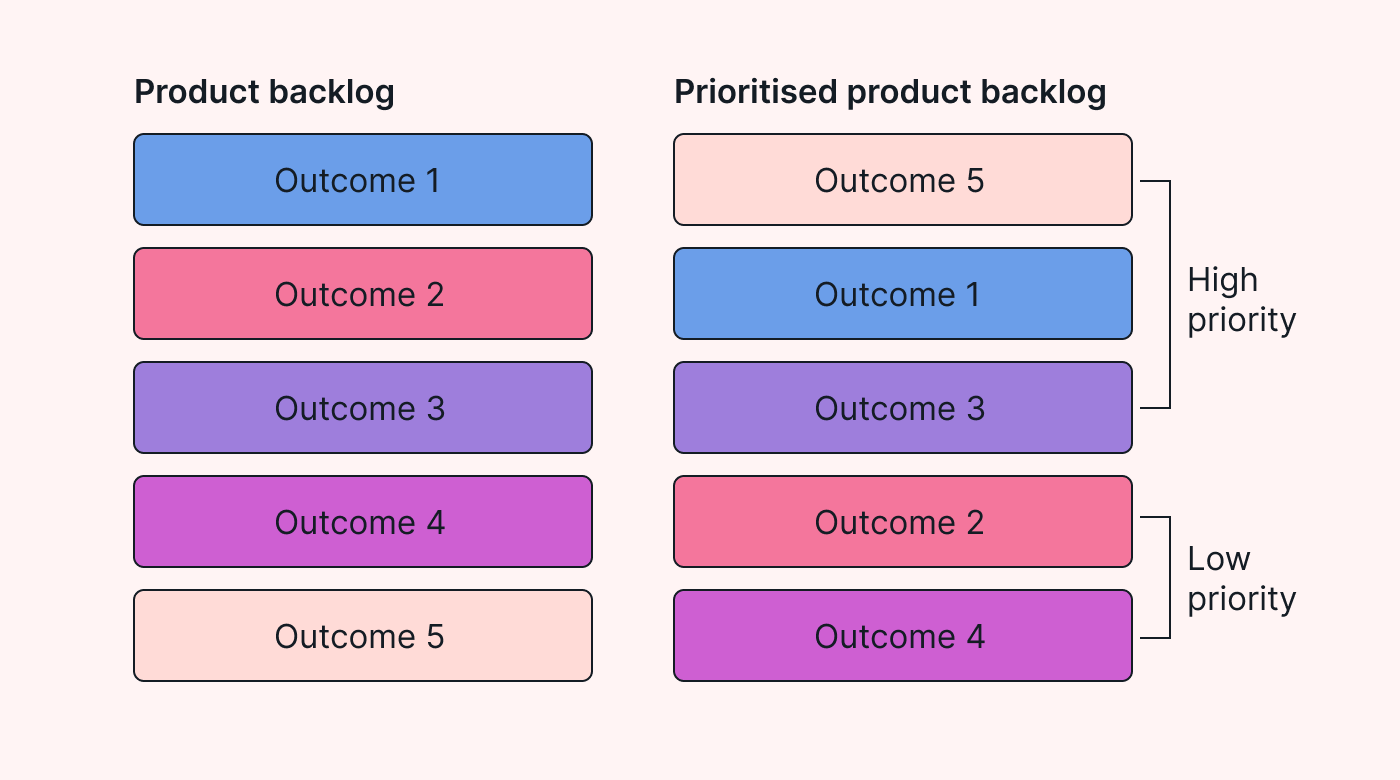 |
This process ensures the product backlog remains refined enough to be pulled into future sprints.
7 Common mistakes when using the five Agile Scrum ceremonies
You now know the Agile ceremonies and how to run them. Here are some common mistakes to avoid when implementing your own Agile ceremonies:
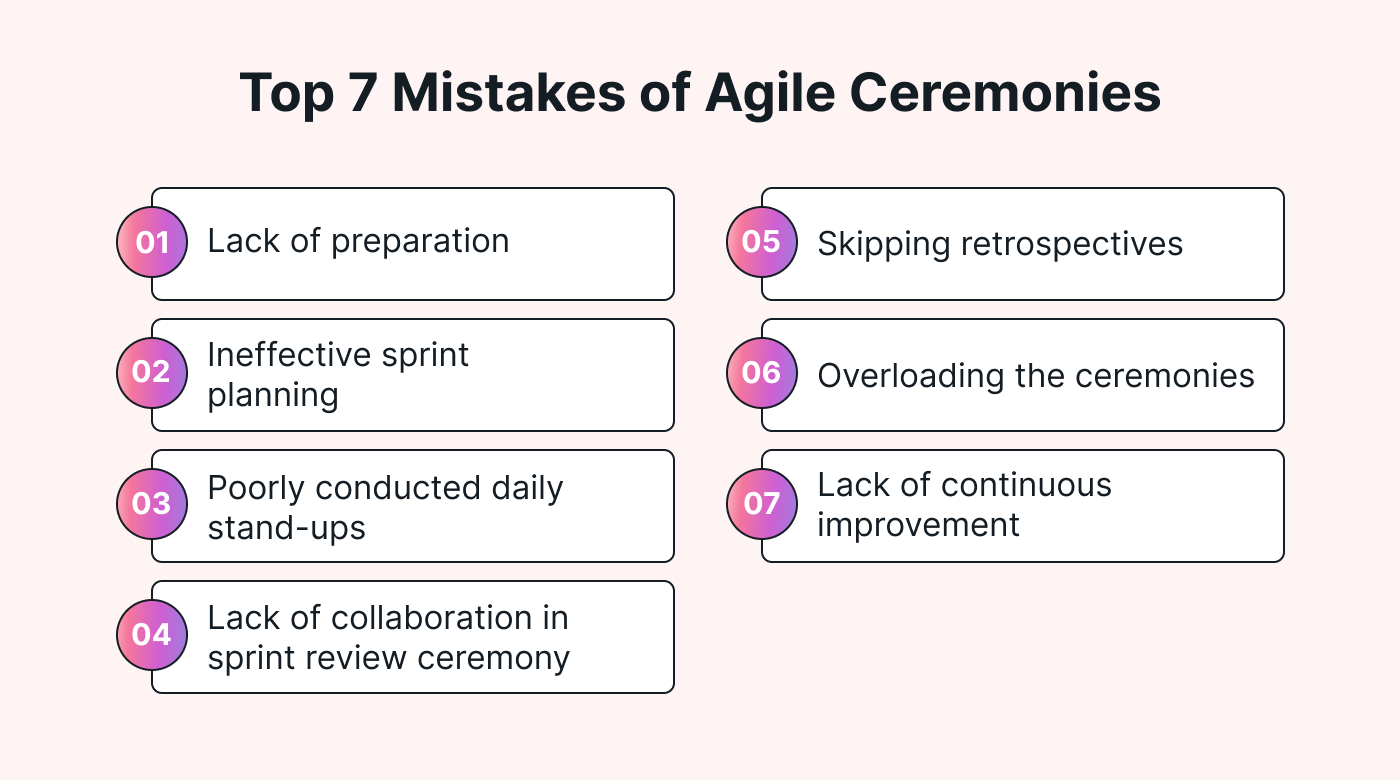 |
As you can see, keeping ceremonies focused and collaborative is key.
Here’s a visual overview of what a full Agile sprint looks like at a glance:
What are the seven Kanban ceremonies, and how do they differ from Agile ceremonies?
We’ve talked about the five Scrum ceremonies. For Kanban, they are called cadences because they are conducted with regular frequency, or rhythm. What are the seven Kanban cadences? Here they are in order by cadence, and how they compare:
- Daily Standup: A brief meeting to discuss the progress and blockers of the team’s work. Similar to the daily Scrum.
- Replenishment Meeting: A planning meeting to determine which new items should be added to the Kanban board by pulling them from the backlog. Its frequency depends on the nature of the tasks, but it is often conducted weekly for about half an hour.
- Delivery Planning Meeting: A collaborative session to plan the delivery of items from the Kanban board. This meeting is similar to the sprint planning meeting conducted once per delivery cadence to assess what needs to be done for a release, perhaps for transition or training for the customer.
- Service Delivery Review: A bi-weekly review with the customer of the team’s performance and the delivery of services. Combined with the processes to review operations, risk, and strategy, these cadences are similar to the sprint review and sprint retrospective.
- Risk Review: A monthly review of potential risks and issues impacting the team’s work. The purpose is to anticipate future risks to work to be delivered, and assess root cause of failures to prevent them in the future. Although risks are addressed in some of the Scrum ceremonies, there is not a separate Scrum ceremony for risk.
- Operations Review: A monthly opportunity to evaluate and improve the organization’s team’s performance and workflow. This meeting is conducted by managers from multiple divisions or systems to improve the efficiency of internal processes and interfaces.
- Strategy Review: A quarterly meeting to discuss long-term goals, direction, and improvement strategies. This meeting is conducted by senior executives to review and adjust strategic direction.
The Operations Review and Strategy Review cadences are enterprise- or organization-wide, and thus have no direct counterpart in Scrum ceremonies.
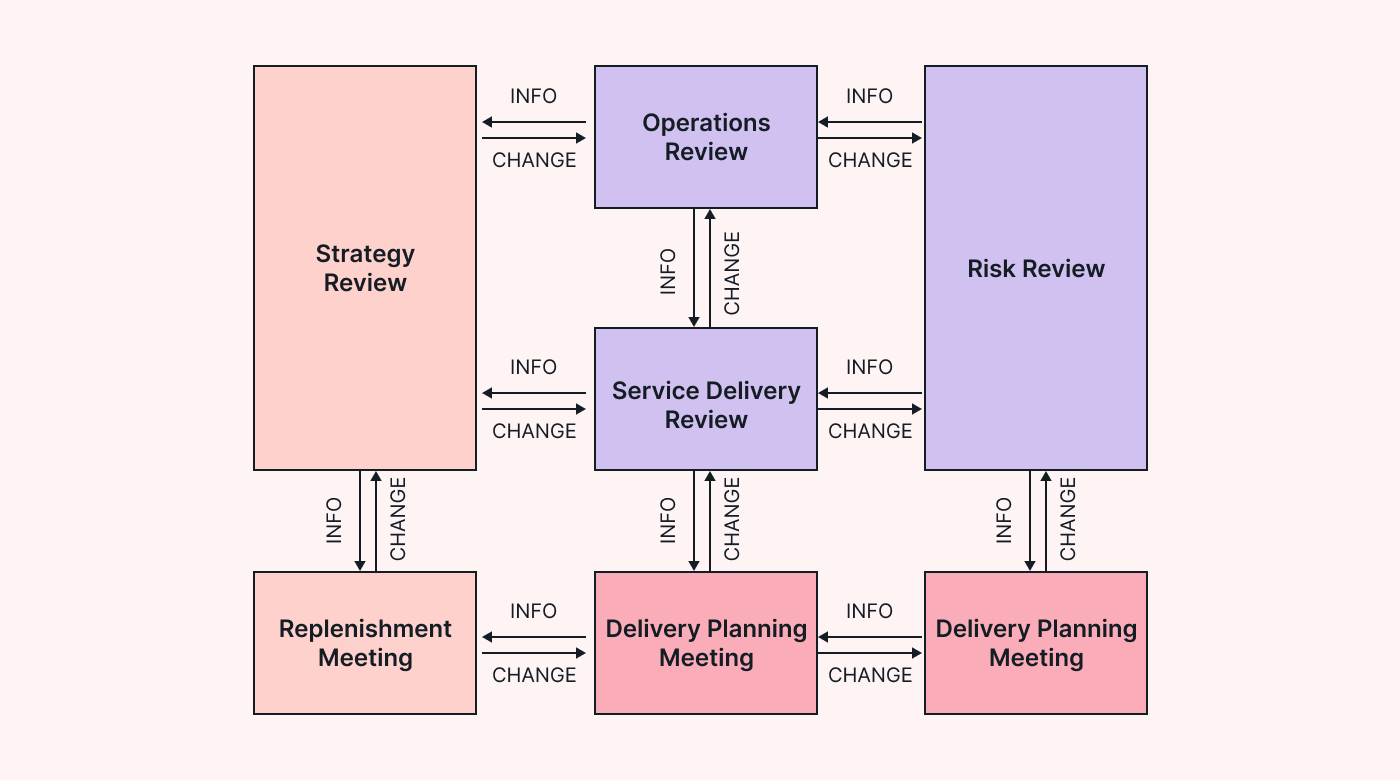 |
While both Kanban cadences and Scrum ceremonies emphasize collaboration, continuous improvement, and regular meetings, they differ in terms of specific focus and frequency.
Kanban cadences are more centered around the continuous flow of work and service delivery. Kanban pulls tasks from the backlog in a controlled volume of work.
Scrum ceremonies are tailored to the iterative nature of sprints and product development. They exist to keep work moving forward rapidly as multiple tasks and projects are happening simultaneously.
Additionally, Kanban cadences emphasize risk assessment and long-term strategy, while Scrum ceremonies focus on sprint planning and retrospective analysis after work is completed.
What’s next for your Agile ceremonies?
There are five Scrum ceremonies and seven Kanban cadences, each playing a role in successfully delivering projects. Your workflow and how you deliver projects will determine which Agile framework you choose.
Keeping the team on track with many changes and tasks can be challenging. It’s hard to run an effective ceremony if you don’t know what it’s supposed to look like. You now have the skills to understand and implement an iterative framework that provides structure while being flexible.
So, what comes next?
Streamline your Agile planning with automated project management.
An automated project management tool like Motion can give you a real-time overview of the status of your Agile tasks, keeping you and your team on track.
Reduce your manual planning by using your Motion Intelligent Calendar to assign tasks to your team. Attach your meeting agenda and sprint or delivery planning goals as a centralized document that can be referenced in Agile ceremonies.
Grab your 7-day free trial today.

